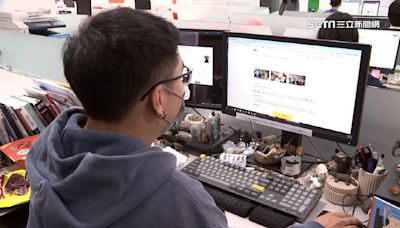搜尋結果
- 37.50+0.45 (+1.21%)2024/06/04 07:48 臺灣股市 將在 1 小時 12 分鐘 期間開市 (報價延遲20分鐘)。
- 昨收37.05開盤37.75委買價0.00委賣價0.00
- 今日價格區間37.10 - 38.1552週價格區間27.65 - 40.85成交量41650 張平均成交量33845 張
- 市值163.390 億本益比 (最近12個月)20.16營運報告/法說會日期2024-08-09除權除息日2024-03-29
相關股票
A National Treasure ( Korean : 국보; Hanja : 國寶) is a tangible artifact, site, or building deemed by the Government of North Korea to have significant historical or artistic value to the country. History.
Rinpoche, also spelled Rimpoche ( Tibetan: རིན་པོ་ཆེ ་, Wylie: rin po che, THL: Rinpoché, ZYPY: Rinboqê ), is an honorific term used in the Tibetan language. It literally means "precious one", and may refer to a person, place, or thing—like the words "gem" or "jewel" ( Sanskrit: Ratna ). [1]
- Description
- History
- Standardized Hentaigana
- Sources of Hentaigana
- In Unicode
- Modern Usage
- Gallery
- External Links
Today, among the hiragana glyphs, those not used in school education since 1900 are called "hentaigana". Originally, hiragana had several forms for a single sound. For example, nowadays, the hiragana reading "ha" has only one form, "は". However, until the Meiji era (1868–1912), it was written in a variety of forms, including the following: , and . ...
Hiragana, the main Japanese syllabic writing system, derived from cursive form of man'yōgana, a system where Chinese ideograms (kanji) were used to write sounds without regard to their meaning. Originally, the same syllable (more precisely, mora) could be represented by several more-or-less interchangeable kanji, or different cursive styles of the ...
Prior to the proposal which led to the inclusion of hentaigana in Unicode10.0, they were already standardized into a list by Mojikiban, part of the Japanese Information-technology Promotion Agency (IPA). To view hentaigana, special fonts need to be installed that support Hentaigana such as 1. BabelStone Han 2. IPA MJ Mincho Version 5.01 and later 3...
Hentaigana are adapted from the reduced and cursive forms of the following man’yōgana (kanji) characters.Source characters for the kana are not repeated below for hentaigana even when there are alternative glyphs; some uncertain.
286 hentaigana characters are included in the Unicode Standard in the Kana Supplement and Kana Extended-A blocks. One character was added to Unicode version 6.0 in 2010, 𛀁 (U+1B001 HIRAGANA LETTER ARCHAIC YE which has the formal alias HENTAIGANA LETTER E-1), and the remaining 285 hentaiganacharacters were added in Unicode version 10.0 in June 2017...
Hentaigana are considered obsolete, but a few marginal uses remain. For example, otemoto (chopsticks), is written in hentaigana on some wrappers and many soba shops use hentaigana to spell kisoba on their signs. (See also: "Ye Olde" for "the old" on English signs.) Hentaigana are used in some formal handwritten documents, particularly in certificat...
Some of the following hentaigana are cursive formsof the same kanji as their standard hiragana counterparts, but simplified differently. Others descend from unrelated kanji that represent the same sound. 1. 以(い)i 2. 江(え)e 3. 於(お)o 4. 可(か)ka, ga 5. 起(き)ki, gi 6. 古(こ)ko, go 7. 志(し)shi, ji 8. 春(す)su, zu 9. 多(た)ta, da 10. 奈(な)na 11. 能(の)no 12. 者(は)ha, ...
Chart of hentaigana calligraphy from O'Neill's A Reader of Handwritten Japanese Archived 2006-07-07 at the Wayback MachineA chart of hentaigana hosted by Jim Breen of the WWWJDICPadmasambhava ("Born from a Lotus"),[note 2] also known as Guru Rinpoche (Precious Guru) and the Lotus from Oḍḍiyāna, was a tantric Buddhist Vajra master from medieval India who taught Vajrayana in Tibet (circa 8th – 9th centuries).[1][2][3][4] According to some early Tibetan sources like the Testament of Ba, he came to Tibet in the 8th ...
The Three Treasures or Three Jewels (Chinese: 三 寶; pinyin: sānbǎo; Wade–Giles: san-pao) are basic virtues in Taoism. Although the Tao Te Ching originally used sanbao to mean " compassion ", " frugality ", and " humility ", the term was later used to translate the Three Jewels ( Buddha , Dharma , and Sangha ) in Chinese ...
Yuan dynasty coinage. Coins of the Yuan dynasty. The Yuan dynasty was a Mongol -ruled Chinese dynasty which existed from 1271 to 1368. After the conquest of the Western Xia, Western Liao, and Jin dynasties they allowed for the continuation of locally minted copper currency, as well as allowing for the continued use of previously created and ...
These cash coins are typical of the hybrid inscriptions formed by combinations of inappropriate characters. They also have series numbers on the reverse. Note that the radical "釒" is missing from this Wu Zhu (五朱) coin. One variant of the Wu Wu (五五) coin has the Xin dynasty inscription Huo Quan (貨泉) on its reverse.





